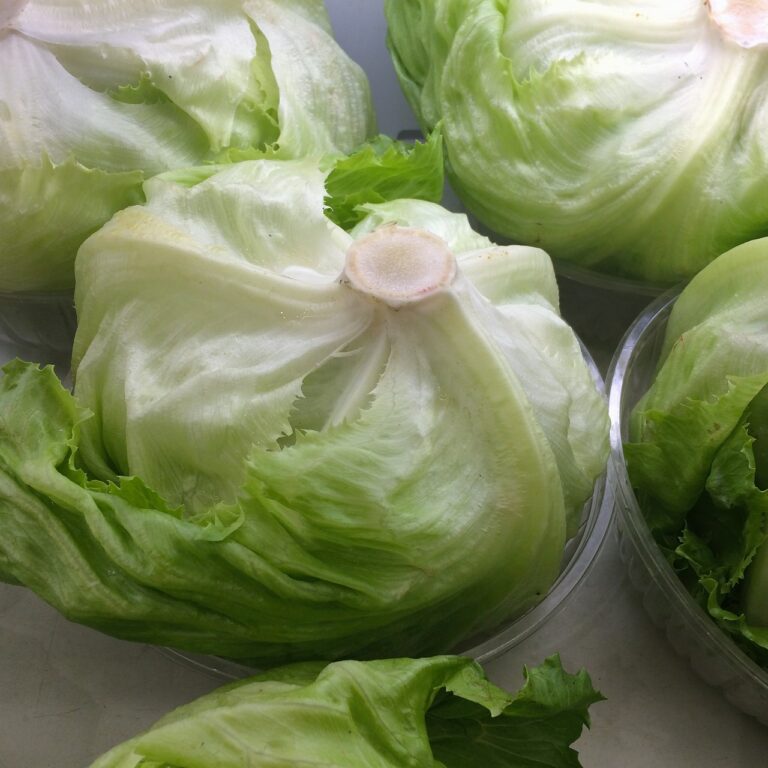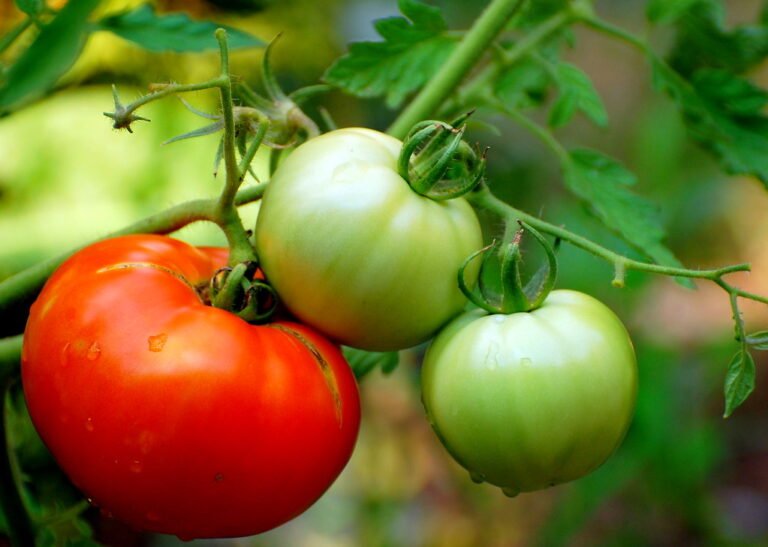An In-depth Look at Different Rosemary Species
Are you curious about the different species of rosemary? In this article, we will take an in-depth look at the various types of rosemary and explore their origins, growth requirements, and medicinal uses. Discover the benefits of rosemary essential oil and learn how to propagate this aromatic herb from cuttings. We will also discuss common pests and diseases that can affect rosemary plants, as well as provide helpful tips for pruning. Get ready to enhance your knowledge of rosemary species!
Origins of Rosemary
The origin of rosemary can be traced back to the Mediterranean region. This aromatic herb has a rich history dating back thousands of years. It was highly regarded by ancient civilizations for its medicinal properties and culinary uses. Rosemary is a perennial plant with needle-like leaves and delicate blue flowers. It thrives in sunny and well-drained soil, making it ideal for Mediterranean climates. The herb is known for its distinct fragrance, which is reminiscent of pine and citrus. Rosemary is often used in cooking to add flavor to dishes such as roasted meats, soups, and stews. Additionally, it is believed to have numerous health benefits, including improving digestion and boosting memory. With its origins deeply rooted in the Mediterranean, rosemary continues to be a beloved herb that adds both flavor and fragrance to dishes around the world.
Common Rosemary Varieties
Now let's delve into the world of common rosemary varieties, building upon the knowledge we've gained about the origins and uses of this cherished herb. One popular variety is the Tuscan Blue Rosemary, known for its vibrant blue flowers and strong aroma. It is often used in Italian cuisine and adds a delightful fragrance to dishes like roasted vegetables and grilled meats. Another common variety is the Prostrate Rosemary, which has a low-growing, trailing habit. It is perfect for ground cover and can be used to create beautiful, fragrant borders in gardens. The Arp Rosemary is a hardy variety that can withstand colder temperatures, making it a great choice for gardeners in chilly climates. Its needle-like leaves are highly aromatic and can be used in a variety of culinary dishes. With these common rosemary varieties, you'll have an array of options to enhance your cooking and beautify your garden.
Rosemary Growth Requirements
To ensure successful growth of rosemary, it is important to understand its specific requirements. Rosemary thrives in well-drained soil with a pH level between 6 and 7. It requires full sun exposure for at least six hours a day, making it ideal for gardens and pots placed in sunny areas. Adequate air circulation is also crucial, so avoid overcrowding when planting multiple rosemary plants. Regular watering is necessary, but be careful not to overwater as this can lead to root rot. Instead, water the plants deeply and allow the top inch of soil to dry out before watering again. Fertilize rosemary with a balanced organic fertilizer in early spring and mid-summer to promote healthy growth. Pruning is essential to maintain its shape and encourage bushiness. With these specific requirements in mind, you can create an ideal environment for your rosemary plants to thrive.
Understanding Rosemary Plant Anatomy
To further understand the growth requirements of rosemary, it is important for you to familiarize yourself with the anatomy of the plant. Rosemary plants have woody stems that can grow up to three feet tall. The leaves are narrow, needle-like, and evergreen, giving off a distinct aromatic fragrance. The flowers of rosemary are small and blue or purple in color, arranged in clusters along the stems. The roots of the plant are shallow but spread out widely to gather nutrients from the soil. Understanding the anatomy of rosemary will help you determine the best growing conditions, such as providing well-drained soil, ample sunlight, and proper pruning techniques. By taking care of the plant's anatomy, you can ensure its healthy growth and maximize its culinary and medicinal benefits.
Medicinal Uses of Rosemary
Understanding the anatomy of rosemary will enable you to appreciate its medicinal uses and leverage its healing properties. Rosemary has been used for centuries in traditional medicine for its numerous health benefits. It contains compounds such as rosmarinic acid and carnosic acid, which have powerful antioxidant and anti-inflammatory properties. These properties make rosemary an effective remedy for various ailments. It can help improve digestion, relieve headaches and migraines, boost memory and concentration, and reduce anxiety and stress. Additionally, rosemary oil has been used topically to treat skin conditions like eczema and acne. Its antibacterial and antifungal properties also make it a great natural remedy for treating wounds and preventing infections. Incorporating rosemary into your daily routine can promote overall wellness and enhance your quality of life.
Culinary Uses of Rosemary
When cooking with rosemary, you can enhance the flavor of your dishes by incorporating its aromatic leaves and fragrant oils. Rosemary is a versatile herb that pairs well with a variety of dishes, adding a distinct and savory taste. Its earthy and slightly minty flavor can elevate everything from roasted meats and vegetables to soups and sauces. You can use rosemary in both fresh and dried forms, but the fresh leaves tend to have a more vibrant flavor. To use rosemary in your cooking, simply strip the leaves from the stem and chop them finely or leave them whole. You can also infuse rosemary into oils and vinegars for a more concentrated flavor. So go ahead, experiment with rosemary in your culinary creations and delight your taste buds.
Rosemary Essential Oil Benefits
Rosemary essential oil can provide various benefits for your health and well-being. This essential oil is known for its powerful antioxidant properties, which can help protect your body against damage from free radicals. It also has anti-inflammatory effects, making it useful for relieving pain and reducing inflammation in conditions like arthritis. Additionally, rosemary essential oil has been shown to improve digestion by stimulating the production of bile and reducing symptoms of indigestion. It can also boost cognitive function and memory, making it a great choice for studying or mental clarity. Rosemary essential oil is also commonly used in aromatherapy to promote relaxation and relieve stress. Overall, incorporating rosemary essential oil into your routine can provide numerous benefits for your overall health and well-being.
Propagating Rosemary From Cuttings
To successfully propagate rosemary from cuttings, proper technique and careful attention are essential. Begin by selecting a healthy, mature rosemary plant with strong stems. Using clean, sharp pruning shears, cut a 4-6 inch stem from the parent plant, just below a leaf node. Remove the lower leaves, leaving only a few at the top. Dip the cut end into a rooting hormone powder to promote root growth. Fill a small pot with a well-draining potting mix and create a hole in the center. Insert the cutting into the hole and gently firm the soil around it. Place the pot in a warm, bright location but away from direct sunlight. Mist the cutting regularly to maintain humidity. In a few weeks, roots should begin to develop. Once the cutting has established a healthy root system, it can be transplanted into a larger pot or directly into the garden.
Pests and Diseases Affecting Rosemary
If you notice pests or diseases affecting your rosemary plants, take immediate action to prevent further damage. Rosemary is generally a hardy plant, but it can still fall victim to a few common pests and diseases. One of the most common pests is the spider mite, which can cause discoloration and webbing on the leaves. Aphids are another pesky insect that can suck the sap from the plant, causing stunted growth and deformed leaves. To combat these pests, you can use insecticidal soap or neem oil. Rosemary is also susceptible to fungal diseases such as powdery mildew and root rot. Regularly inspect your plants for signs of these diseases and remove any infected parts immediately. Proper watering and good air circulation can help prevent these diseases from taking hold. By being vigilant and taking proactive measures, you can keep your rosemary plants healthy and thriving.
Tips for Pruning Rosemary Plants
When addressing pests and diseases affecting your rosemary plants, it is important to also consider tips for pruning them. Pruning rosemary plants not only helps maintain their shape and size but also promotes healthy growth and longevity. Start by using sharp pruning shears to remove any dead, damaged, or diseased branches. Cut them back to where healthy growth begins. You can also trim the tips of the branches to encourage bushier growth. It is best to prune your rosemary plants in the spring, after the last frost, or in early fall. Avoid pruning during the winter months when the plant is dormant. Remember to always remove any fallen leaves or debris from around the plant to prevent the spread of pests and diseases. Following these pruning tips will ensure that your rosemary plants thrive and continue to provide you with aromatic leaves for culinary and medicinal uses.
Conclusion
In conclusion, exploring the different species of rosemary can be a fascinating journey. From its origins to the various varieties available, understanding the growth requirements and anatomy of rosemary plants is essential for successful cultivation. Additionally, learning about the medicinal uses and benefits of rosemary essential oil can greatly enhance its value. With the knowledge of propagating from cuttings and addressing pests and diseases, along with tips for pruning, one can confidently grow and maintain beautiful rosemary plants.






